Vietnamese mangoes are taking the global fruit market by storm, and for good reason. Renowned for their vibrant flavor, juicy texture, and rich aroma, these mangoes offer a tropical twist that’s hard to resist. As consumers increasingly seek high-quality, exotic fruits, Vietnamese mangoes present an exciting opportunity for import businesses looking to diversify their offerings. With Vietnam’s favorable climate and advanced agricultural practices, these mangoes are not only delicious but also consistently fresh and affordable. Whether you’re targeting gourmet markets, health-conscious consumers, or specialty grocery stores, Vietnamese mangoes can elevate your product lineup. Ready to explore why these mangoes are a game-changer for your import business? Let’s dive in!
The Competitive Edge: Why Vietnamese Mangoes Stand Out in the Global Market
Vietnamese mangoes have a unique competitive edge that sets them apart on the global stage. First, Vietnam’s tropical climate and fertile soil create ideal growing conditions, resulting in mangoes that are sweeter, juicier, and more flavorful than many other varieties. Additionally, Vietnamese farmers use sustainable farming techniques, ensuring their produce is both eco-friendly and high-quality. These mangoes are also competitively priced, making them an attractive option for businesses aiming to maximize profit margins while offering premium products. Furthermore, Vietnam’s strategic location and well-established export infrastructure ensure efficient shipping and minimal delays. With their exceptional taste, affordability, and reliability, Vietnamese mangoes are a top choice for importers worldwide. By choosing Vietnamese mangoes, you’re not just importing fruit—you’re bringing a piece of tropical excellence to your customers.
Also Read : Top 8 Best Vietnam Avocados for Your Import Business!
8 Types of Vietnam Mangoes
1. Hoa Loc Mango

Known as the pride of Vietnam’s Mekong Delta, the Hoa Loc mango is famous for its rich aroma and golden-yellow skin. Its flesh is irresistibly sweet, smooth, and juicy—perfect for both fresh eating and desserts. What truly sets it apart is the floral fragrance that lingers even before the mango is sliced. Thanks to its consistent quality and premium taste, Hoa Loc mangoes are often chosen as luxurious gifts or exported delicacies.
2. Chat Chu Mango
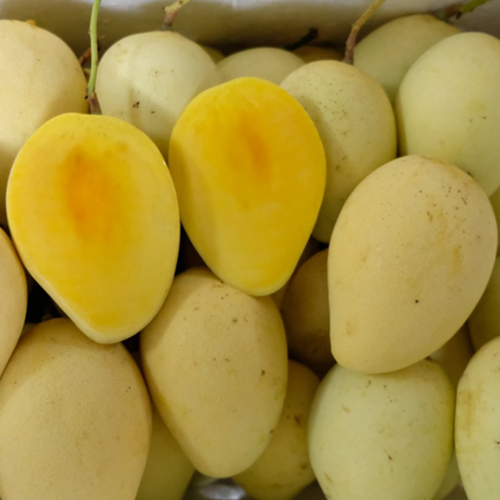
Next up, the Chat Chu mango delights taste buds with its firm texture and refreshingly sweet flavor. Although it’s not as well-known internationally, it holds a beloved place in local Vietnamese markets. This mango ripens with a beautiful orange hue and offers a crisp bite, making it a popular choice for both snacking and salad dishes. If you’re craving a balance between sweetness and a hint of tang, Chat Chu has you covered.
3. Acacia Mango
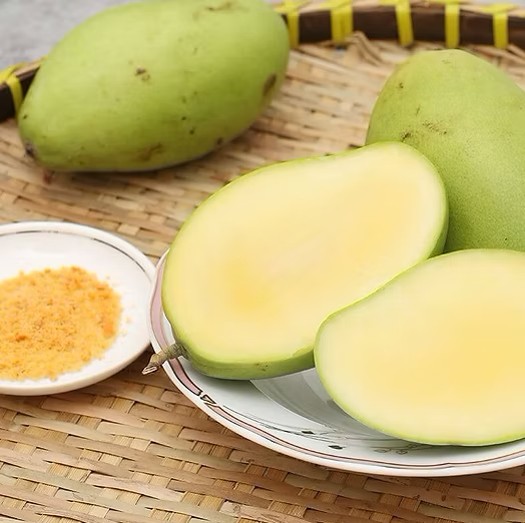
The Acacia mango stands out for its light green skin and elongated shape. Inside, you’ll find fiberless, creamy flesh that melts in your mouth with each bite. It boasts a subtle, honeyed sweetness that doesn’t overpower, making it an ideal pick for those who prefer a more delicate mango flavor. Its smooth texture also makes it a great base for smoothies and traditional Vietnamese desserts.
4. Elephant Mango
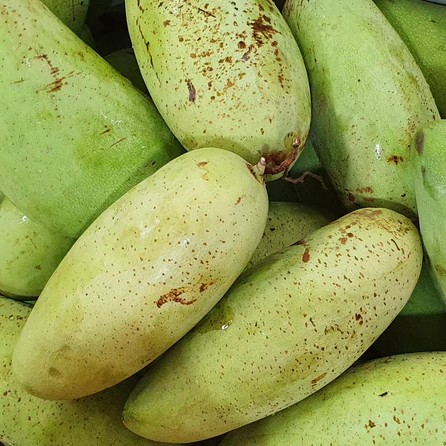
As the name suggests, the Elephant mango is impressively large—some even weigh over 0,5-1.5 kilograms! But its size isn’t the only thing worth noting. This giant mango features thick, juicy flesh with a mildly sweet taste, ideal for sharing with family or friends. It’s commonly grown in southern Vietnam, where locals admire it not just for its flavor but also for its symbolism of abundance and prosperity.
5. Thanh Ca Mango
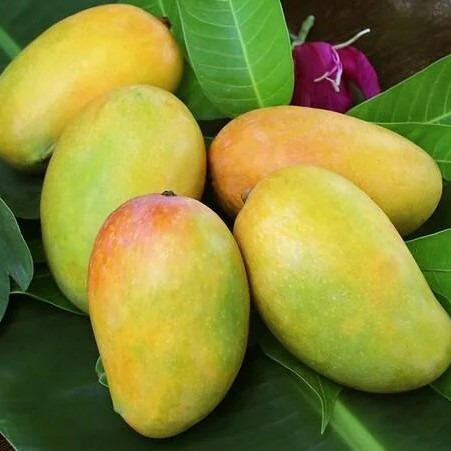
The Thanh Ca mango may not be as mainstream, but it’s a hidden gem for true mango lovers. Grown mainly in the northern regions, it has a refreshing tartness when eaten slightly underripe and turns satisfyingly sweet as it matures. This dual flavor profile makes it a versatile option—great for pickles, salads, or just enjoying fresh depending on your taste preference.
6. Four-Quarter Mango
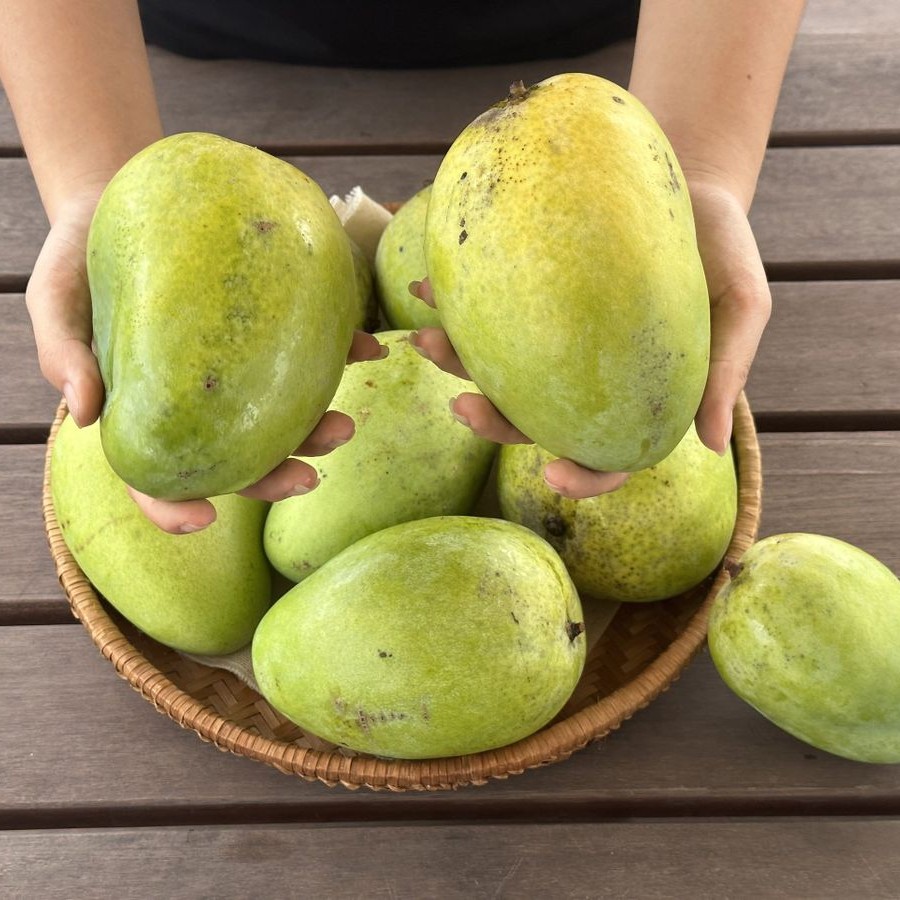
The uniquely named Four-Quarter mango refers to its unusual ripening pattern—dividing into four ripened zones that can taste slightly different in sweetness. This natural quirk offers a fun and surprising experience with every bite! Its flesh is generally firm and bright, making it visually appealing and satisfying to eat. For those who love variety, this mango truly keeps things interesting.
7. Flat-Seed Mango
One of the easiest mangoes to enjoy, the Flat-Seed mango features a thin, almost paper-like seed that allows for more edible flesh per fruit. It’s sweet, fragrant, and very juicy—ideal for anyone who dislikes wasting fruit. The thin seed makes it an excellent choice for processing into dried mango slices, juices, or frozen treats without sacrificing too much yield.
8. Four Seasons Mango
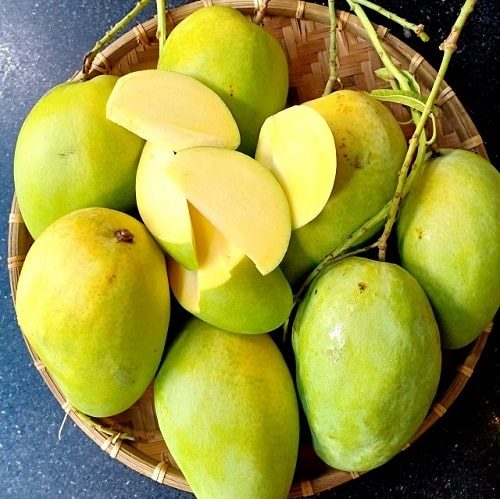
Finally, the Four Seasons mango lives up to its name by offering fruit nearly year-round—an absolute delight for mango fans! It’s small to medium in size, but don’t let that fool you: the flavor is rich, the flesh is tender, and the aroma is unmistakably inviting. Its consistent availability makes it a go-to variety for markets, households, and even cafes across Vietnam.
Also Read : 5 Types of Durian in Vietnam That Can Be Used as Import Business Opportunities
How to Start Importing Vietnamese Mangoes: A Step-by-Step Guide
1. Research Export-Import Regulations
The first step in importing Vietnamese mangoes is understanding the legal requirements for both export from Vietnam and import into your target market. Each country has specific regulations regarding food imports, including sanitary standards, phytosanitary certificates, and labeling requirements. For instance, many countries require mangoes to undergo heat treatment or fumigation to prevent pest infestations. Familiarize yourself with Harmonized System (HS) codes for mangoes to calculate applicable duties and taxes accurately. If navigating these regulations feels overwhelming, consider consulting a customs broker or leveraging platforms like AsiaCommerce to handle compliance seamlessly.
2. Build Relationships with Local Suppliers
Building strong relationships with reliable Vietnamese suppliers is crucial to ensuring consistent quality and supply. Start by identifying reputable farms or exporters through trade shows, online platforms like Alibaba, or local agricultural associations. Visit Vietnam if possible to inspect farms, assess mango quality, and negotiate terms directly. Establishing trust with suppliers not only ensures better prices but also guarantees priority during peak harvest seasons. Regular communication and transparency are key to fostering long-term partnerships that benefit both parties.
3. Ensure Product Quality
Quality is the cornerstone of any successful import business. Before finalizing deals, request samples of mangoes to evaluate their taste, texture, freshness, and shelf life. Pay attention to factors like ripeness levels, packaging methods, and handling practices to ensure the mangoes remain in pristine condition during transit. Additionally, verify that suppliers adhere to international food safety standards, such as GlobalGAP or HACCP certifications. High-quality mangoes not only satisfy customers but also build trust and loyalty, encouraging repeat purchases.
4. Use Reliable Logistics Services
Efficient logistics are essential when importing perishable goods like mangoes. Partner with experienced freight forwarders who specialize in transporting fresh produce to minimize spoilage risks. Consider factors like temperature-controlled shipping containers, transit times, and costs when choosing a logistics provider. Air freight is faster but more expensive, while sea freight offers cost savings for bulk orders. Track shipments closely to address potential delays or issues promptly. Properly optimized logistics ensure your mangoes arrive fresh, ripe, and ready for sale.
5. Prepare Legal Documents
Documentation is a critical aspect of importing Vietnamese mangoes. Required documents typically include invoices, packing lists, certificates of origin, phytosanitary certificates, and import permits. Ensure all paperwork is accurate and submitted on time to avoid customs delays or penalties. Mistakes in documentation can lead to costly holdups or even rejected shipments. If you’re unfamiliar with the process, work with a logistics expert or platform like AsiaCommerce to streamline document preparation and submission.
6. Establish a Marketing Strategy
Once your mangoes arrive, the next step is promoting them effectively to capture consumer interest. Develop a marketing strategy that highlights the unique qualities of Vietnamese mangoes, such as their vibrant flavors, exotic appeal, and health benefits. Use social media, email campaigns, and influencer partnerships to showcase stunning visuals and engaging content about the mangoes. Highlight their versatility—whether eaten fresh, blended into smoothies, or used in gourmet recipes—to attract diverse customer segments. Hosting tasting events or offering limited-time discounts can also generate buzz and drive initial sales.
Import Vietnamese Mangoes Effortlessly with AsiaCommerce!
Bringing the vibrant flavors of Vietnamese mangoes to your market has never been easier. With AsiaCommerce , you can streamline every step of the import process—from sourcing premium mangoes directly from trusted Vietnamese suppliers to handling compliance, logistics, and shipping with ease. Our expert team ensures that your mangoes arrive fresh, on time, and ready to delight your customers. Say goodbye to the stress of navigating regulations, paperwork, or supply chain challenges—let us handle the heavy lifting while you focus on growing your business.
👉 Ready to get started? Click here to learn how AsiaCommerce can simplify your journey and help you capitalize on the booming demand for exotic fruits. Together, we’ll bring the sweetness of Vietnam to your customers’ tables!

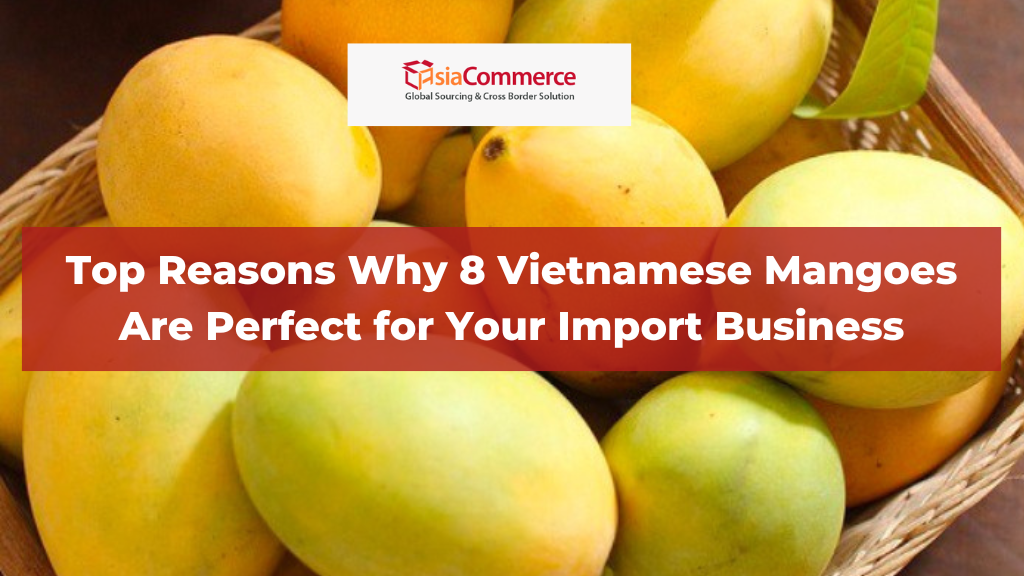
0 Comments